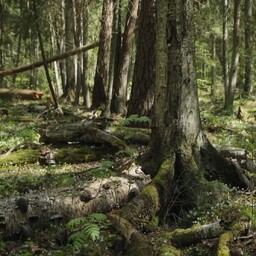In Estonia, there are over 112,000 hectares of dry forest areas in Natura 2000 sites. These forests grow on mineral soils and are little influenced by humans. Dry forests include, for example, forested dunes, old natural forests, and spruce forests rich in grass.
Taavi Tattar from the Environment Agency says that the condition of these forests is poor. The forests are of uniform age or have a poor structure. Many species require diverse forests with fallen and dead trees. The number of these species is decreasing because suitable habitats are scarce. Diverse forests are also less susceptible to diseases and more adaptable to climate change.
The European Union has agreed on improving the condition of dry forests. In Estonia, an action plan is being developed for this purpose. Public discussion will take place in the fall. The initial targets are set for 2030. By then, dry forest habitats should be mapped, and their diversity restored on 9,000 hectares of state land, for example, in Karula and Vilsandi National Parks.
Currently, it is being discussed how much humans should do for the benefit of dry forests. National monitoring shows that the natural development of forests is the best solution. Storms and other natural processes create dead trees, which are necessary for species that need habitats.
Humans can accelerate the natural process. For example, trees of different diameters can be felled and left to decay. Controlled burning can also help with spruce regeneration and the removal of moss cover. Creating gaps means making small holes in the forest where felled trees are left in the forest, turning them into habitats for other species.
The action plan for dry forests will be published in the fall. The budget for the activities is estimated at 4.2 million euros for the years 2025-2032. Conducting inventories and restoration activities require funding.

